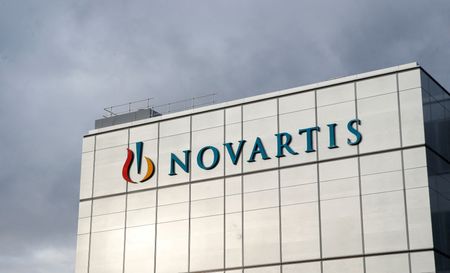FRANKFURT (Reuters) -Swiss drugmaker Novartis on Thursday projected currency-adjusted sales growth of 5% to 6% until 2030, supported by higher peak-revenue prospects for its cancer drugs Kisqali and Scemblix to offset losses from expiring patents.
In a statement ahead of an investor event, the company lifted the peak sales forecast for Kisqali, used to treat a common type of breast cancer, to at least $10 billion from a previous estimate of $8 billion.
For leukaemia drug Scemblix, Novartis now expects peak sales of at least $4 billion, up from at least $3 billion.
The company said its eight most promising approved drugs each carry peak-sales potential of $3 billion to $10 billion.
Last month, it moved to acquire Avidity Biosciences in a $12 billion deal to add muscle-disorder treatment candidates, part of a broader push to offset declining sales of established products, including its heart-failure drug Entresto.
The company has said the planned acquisition would lift its projected annual sales growth for 2024–2029 to 6%, up from the previously expected 5%.
The pharma major said on Thursday it is targeting a core operating income margin of at least 40% by 2029, after factoring in a 1-2 percentage point drag from the Avidity acquisition, expected to close in the first half of 2026.
This compares with a 41.2% margin in the first nine months of 2025.
Last month, Novartis posted third-quarter earnings roughly in line with forecasts, but weaker margins disappointed investors, while new drug growth did little to allay fears over a plateau in older-product sales.
(Reporting by Ludwig Burger; Editing by Christian Schmollinger and Sherry Jacob-Phillips)









